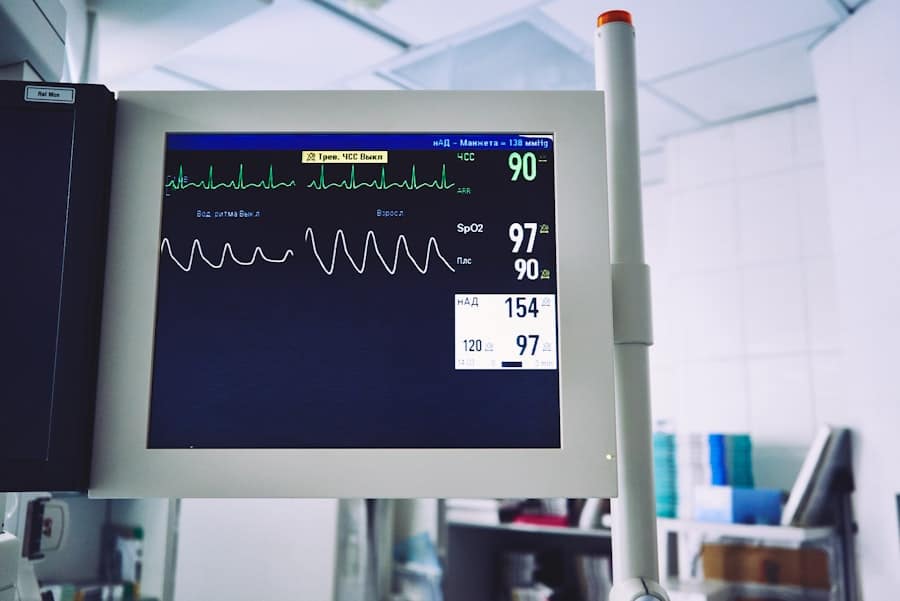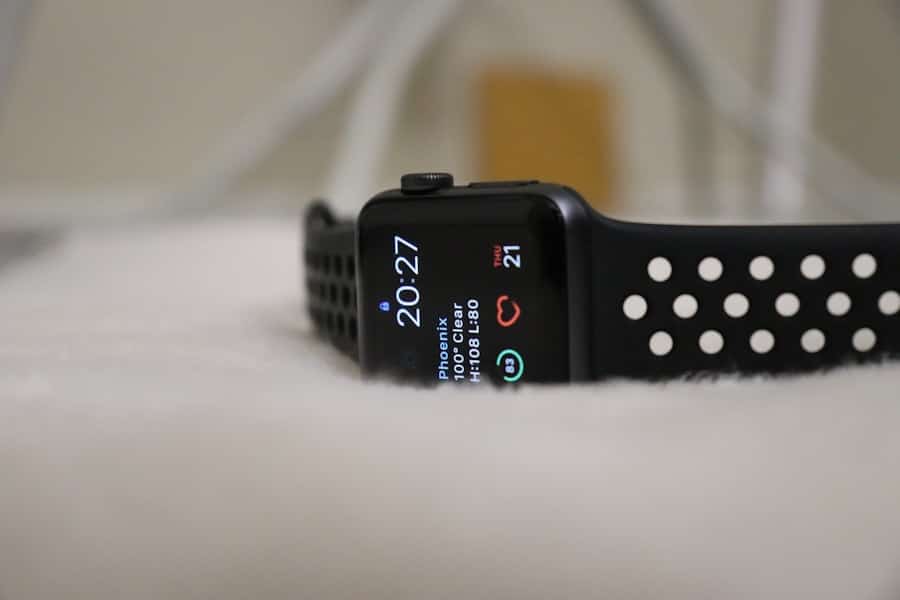The advent of wearable technology has revolutionized various sectors, and healthcare is no exception. In the realm of cardiac rehabilitation, wearables have emerged as a pivotal tool, enhancing the way healthcare providers monitor and support patients recovering from cardiovascular events. These devices, which include smartwatches, fitness trackers, and specialized medical monitors, are designed to collect real-time data on a patient’s physiological parameters, such as heart rate, physical activity levels, and even sleep patterns.
This continuous stream of information allows for a more personalized approach to rehabilitation, enabling healthcare professionals to tailor interventions based on individual patient needs. Cardiac rehabilitation programs are essential for patients recovering from heart attacks, surgeries, or other cardiovascular conditions. Traditionally, these programs have relied on in-person visits and manual tracking of progress, which can be cumbersome and may not provide a complete picture of a patient’s daily activities.
The integration of wearables into these programs offers a transformative solution, allowing for remote monitoring and real-time feedback.
Key Takeaways
- Wearables play a crucial role in monitoring physical activity and exercise adherence in cardiac rehabilitation programs.
- The use of wearables in cardiac rehabilitation programs offers advantages such as real-time monitoring, personalized feedback, and improved patient engagement.
- Challenges and limitations of wearables in cardiac rehabilitation programs include data accuracy, patient compliance, and cost.
- Wearables have a significant impact on patient engagement and motivation by providing continuous feedback and promoting self-management.
- Integrating wearable data into cardiac rehabilitation programs can enhance personalized care and improve patient outcomes.
The Role of Wearables in Monitoring Physical Activity and Exercise Adherence
Wearable devices play a crucial role in monitoring physical activity levels among patients in cardiac rehabilitation programs. These devices are equipped with sensors that track various metrics, including steps taken, distance traveled, and calories burned. By providing patients with immediate feedback on their activity levels, wearables encourage adherence to prescribed exercise regimens.
For instance, a patient recovering from a heart attack may be advised to engage in moderate-intensity aerobic exercise for at least 150 minutes per week. Wearables can help track this progress, ensuring that patients remain accountable to their goals. Moreover, the data collected by wearables can be invaluable for healthcare providers.
By analyzing trends in physical activity over time, clinicians can identify patterns that may indicate whether a patient is adhering to their exercise plan or if adjustments are needed. For example, if a patient consistently falls short of their activity goals, healthcare providers can intervene with motivational strategies or modify the exercise program to better suit the patient’s capabilities and preferences. This data-driven approach not only enhances the effectiveness of rehabilitation but also fosters a sense of partnership between patients and their healthcare teams.
Advantages of Using Wearables in Cardiac Rehabilitation Programs

The advantages of incorporating wearables into cardiac rehabilitation programs are manifold. One significant benefit is the ability to facilitate remote monitoring. Patients can engage in their rehabilitation from the comfort of their homes while still being closely monitored by healthcare professionals.
This is particularly beneficial for individuals who may have mobility issues or live in remote areas where access to rehabilitation facilities is limited. Remote monitoring through wearables reduces the need for frequent hospital visits, thereby saving time and resources for both patients and healthcare systems. Additionally, wearables can enhance patient education and self-management.
Many devices come equipped with mobile applications that provide educational resources about heart health, exercise techniques, and dietary recommendations. This information empowers patients to make informed decisions about their health and encourages them to take ownership of their recovery process. For instance, a patient using a smartwatch may receive reminders to take medication or notifications about upcoming exercise sessions, reinforcing healthy habits and promoting adherence to rehabilitation protocols.
Challenges and Limitations of Wearables in Cardiac Rehabilitation Programs
Despite the numerous advantages of wearables in cardiac rehabilitation, several challenges and limitations must be addressed. One primary concern is the variability in device accuracy and reliability. Not all wearables are created equal; some may provide inaccurate readings due to poor sensor quality or improper usage by the patient.
For example, heart rate monitors may struggle to provide accurate data during high-intensity workouts or when the device is not worn correctly. This variability can lead to misinterpretations of a patient’s condition and potentially compromise the effectiveness of the rehabilitation program. Another challenge lies in the digital divide that exists among patients.
While younger populations may be more adept at using technology, older adults or those with limited technological literacy may struggle with wearable devices. This disparity can create barriers to access and utilization, ultimately affecting the overall success of cardiac rehabilitation programs. Healthcare providers must consider these factors when implementing wearables into their practice, ensuring that all patients receive adequate support and training to maximize the benefits of these technologies.
The Impact of Wearables on Patient Engagement and Motivation
Wearable technology has been shown to significantly enhance patient engagement and motivation within cardiac rehabilitation programs. The interactive nature of these devices fosters a sense of accountability among patients as they track their progress toward fitness goals. For instance, many wearables feature gamification elements such as challenges or rewards for achieving specific milestones.
This competitive aspect can motivate patients to push themselves further than they might otherwise do without such encouragement. Furthermore, wearables facilitate social connectivity among patients. Many devices allow users to share their achievements with friends or family members through social media platforms or dedicated apps.
This social support can be instrumental in maintaining motivation throughout the rehabilitation process. Patients who feel connected to others who are undergoing similar experiences may be more likely to adhere to their exercise regimens and remain committed to their recovery goals.
Integrating Wearable Data into Cardiac Rehabilitation Programs

Enhanced Patient-Provider Communication
The use of wearable data can also enhance communication between patients and healthcare providers. Regularly sharing data collected from wearables during follow-up appointments enables more informed discussions about progress and challenges faced during rehabilitation. This approach fosters trust and transparency between patients and providers, ultimately leading to better health outcomes.
Streamlined Care Coordination
Furthermore, integrating wearable data into electronic health records (EHRs) can streamline care coordination among multidisciplinary teams involved in a patient’s recovery.
Future Trends and Developments in Wearables for Cardiac Rehabilitation
As technology continues to evolve, so too will the capabilities of wearables in cardiac rehabilitation programs. Future developments may include more advanced sensors capable of monitoring additional physiological parameters such as blood pressure or blood glucose levels in real time. These innovations could provide a more comprehensive view of a patient’s health status and enable proactive interventions when necessary.
Artificial intelligence (AI) is also poised to play a significant role in the future of wearables for cardiac rehabilitation. AI algorithms could analyze data collected from multiple patients to identify trends and predict outcomes based on individual characteristics. This predictive analytics approach could help healthcare providers identify patients at risk for complications or non-adherence early on, allowing for timely interventions that could improve overall rehabilitation success rates.
The Potential of Wearables in Improving Cardiac Rehabilitation Outcomes
The integration of wearable technology into cardiac rehabilitation programs holds immense potential for improving patient outcomes and enhancing the overall effectiveness of these programs. By facilitating continuous monitoring, promoting patient engagement, and enabling personalized care plans based on real-time data, wearables represent a significant advancement in how we approach cardiovascular recovery. As technology continues to advance and become more accessible, it is likely that we will see an increasing number of patients benefiting from these innovative tools in their journey toward better heart health.
The future of cardiac rehabilitation is undoubtedly intertwined with the evolution of wearable technology, promising a more connected and informed approach to patient care.
A related article discussing the impact of smartwatches in the workplace can be found at this link. This article explores how wearable technology, specifically smartwatches, is transforming the way employees work and stay connected. Just as wearables are enhancing cardiac rehabilitation programs, they are also revolutionizing the workplace by providing real-time data and insights to improve productivity and overall well-being.
FAQs
What are wearables in the context of cardiac rehabilitation programs?
Wearables in the context of cardiac rehabilitation programs refer to devices that can be worn on the body to monitor and track various health metrics such as heart rate, activity levels, and sleep patterns.
How do wearables enhance cardiac rehabilitation programs?
Wearables enhance cardiac rehabilitation programs by providing real-time monitoring of a patient’s vital signs and activity levels, allowing for more personalized and effective rehabilitation plans. They also encourage patients to stay active and adhere to their rehabilitation program by providing feedback and motivation.
What types of wearables are commonly used in cardiac rehabilitation programs?
Common types of wearables used in cardiac rehabilitation programs include fitness trackers, smartwatches, and heart rate monitors. These devices can track physical activity, heart rate, and sleep patterns, providing valuable data for healthcare providers to monitor and adjust the rehabilitation program as needed.
Are wearables safe to use in cardiac rehabilitation programs?
When used as intended and under the guidance of healthcare professionals, wearables are generally safe to use in cardiac rehabilitation programs. It is important for patients to follow the instructions for proper use and to consult with their healthcare provider if they have any concerns.
What are the potential benefits of using wearables in cardiac rehabilitation programs?
The potential benefits of using wearables in cardiac rehabilitation programs include improved monitoring of patients’ progress, increased patient engagement and motivation, more personalized rehabilitation plans, and the ability to detect and address any potential issues or complications more quickly.

